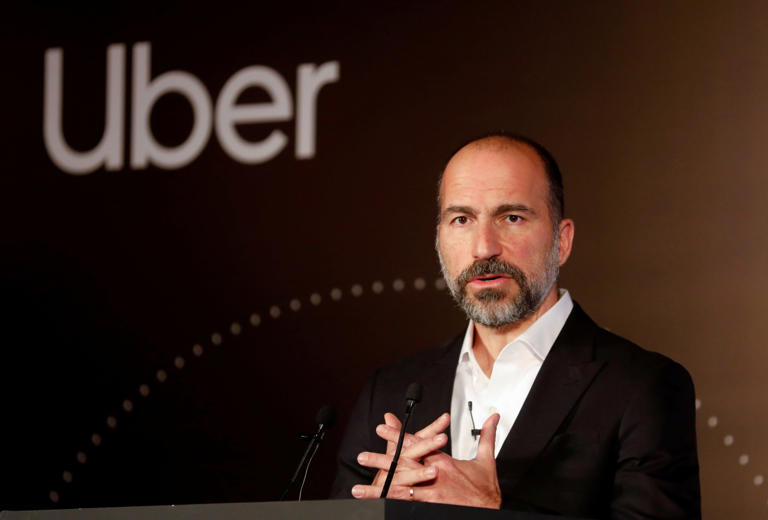Tesla’s endeavor to harness its full self-driving (FSD) technology for the operation of autonomous taxi fleets represents a bold step towards revolutionizing the transportation industry. However, the complexities inherent in this ambitious vision have prompted scrutiny and discussion, particularly from industry insiders like Uber CEO Dara Khosrowshahi.
In acknowledging Tesla’s leadership in electric vehicles (EVs) and recognizing Elon Musk’s visionary approach, Khosrowshahi’s recent comments underscore a nuanced perspective on the challenges and opportunities associated with autonomous driving technology. While Tesla’s strides in FSD development are commendable, Khosrowshahi suggests that achieving the full potential of autonomous taxi services will require more than just self-driving cars.
Central to Khosrowshahi’s argument is the assertion that successful deployment of autonomous taxis demands a comprehensive suite of tools and infrastructure beyond the capabilities of FSD technology alone. Uber’s existing platform offers a wealth of essential features, ranging from advanced scheduling algorithms to dynamic pricing mechanisms and robust identity verification systems. These components are vital for ensuring the seamless operation and safety of autonomous ride-sharing services, encompassing crucial aspects such as trip management, fare calculation, and passenger authentication.
By highlighting Uber’s readiness to collaborate with all electric vehicle manufacturers, including Tesla, Khosrowshahi positions the rideshare giant as a strategic partner in the advancement of autonomous driving technology. Leveraging its extensive network and operational expertise, Uber aims to facilitate the integration of FSD technology into its platform, driving demand and accelerating the adoption of autonomous ride-sharing services on a global scale.
Despite Tesla’s progress in testing and refining its FSD capabilities, significant challenges persist, particularly in navigating complex urban environments and adhering to stringent safety standards. Reports of difficulties encountered by Tesla’s FSD system in scenarios such as negotiating busy intersections underscore the intricacies and real-world complexities inherent in autonomous driving.
In this context, collaboration between industry leaders like Tesla and Uber emerges as a compelling strategy for addressing these challenges and unlocking the full potential of autonomous taxi services. By combining Tesla’s cutting-edge technology with Uber’s operational prowess and customer-centric approach, the two companies can synergize their strengths to overcome barriers to adoption and pave the way for a future where autonomous transportation is not just a possibility but a practical reality.
In summary, while Tesla’s pursuit of autonomous taxi fleets represents a paradigm shift in transportation, collaboration with established players like Uber is essential for realizing this vision. By pooling their resources, expertise, and innovation, Tesla and Uber can chart a course towards a future where autonomous mobility is accessible, efficient, and sustainable, ultimately reshaping the way we move and interact with our urban environments.
